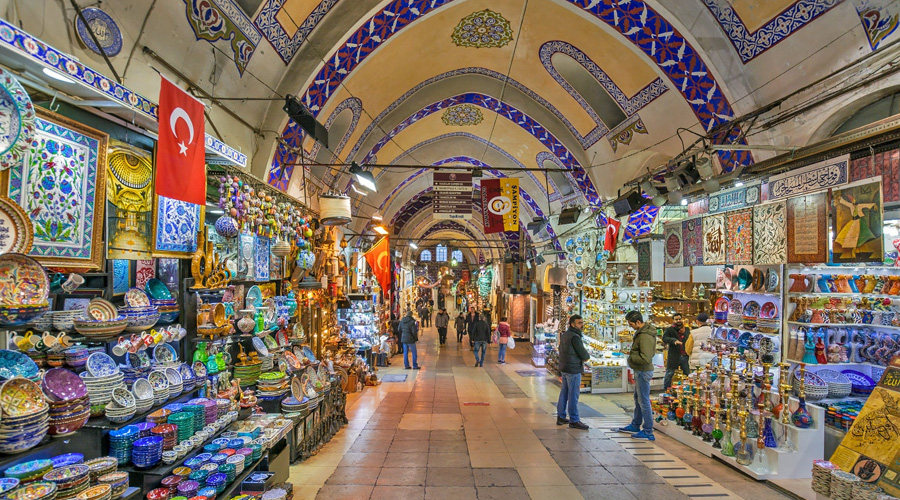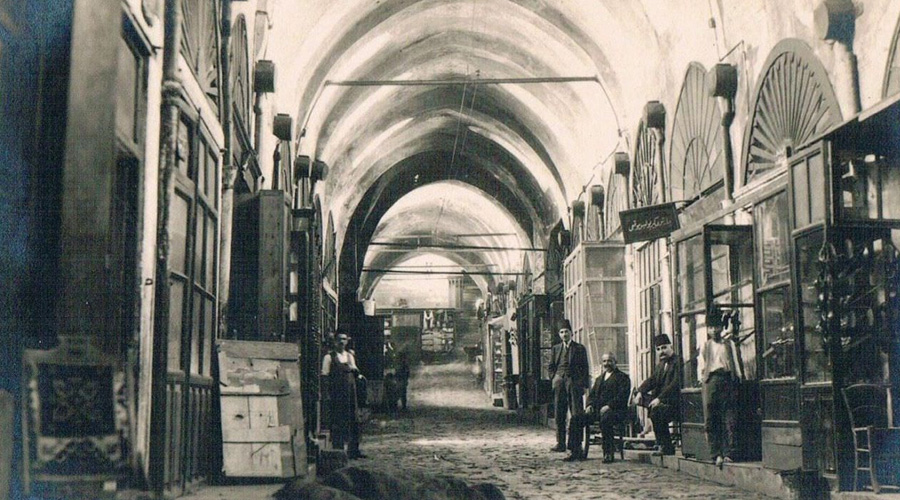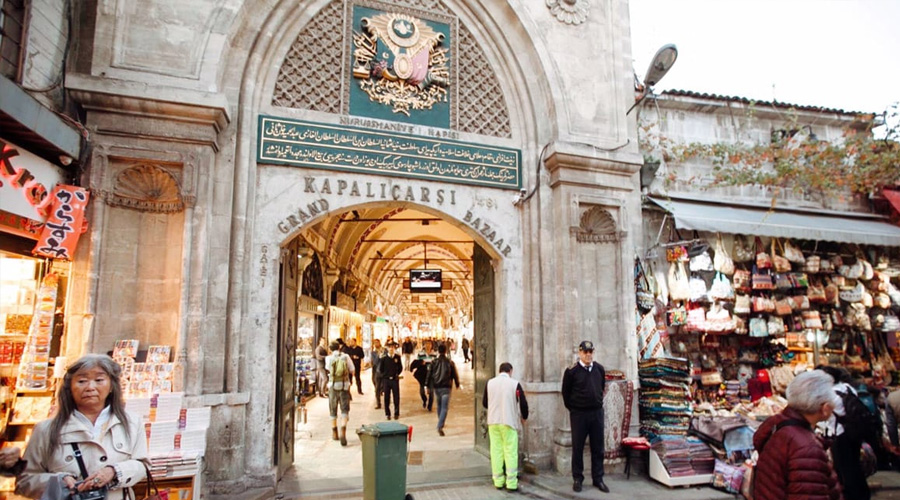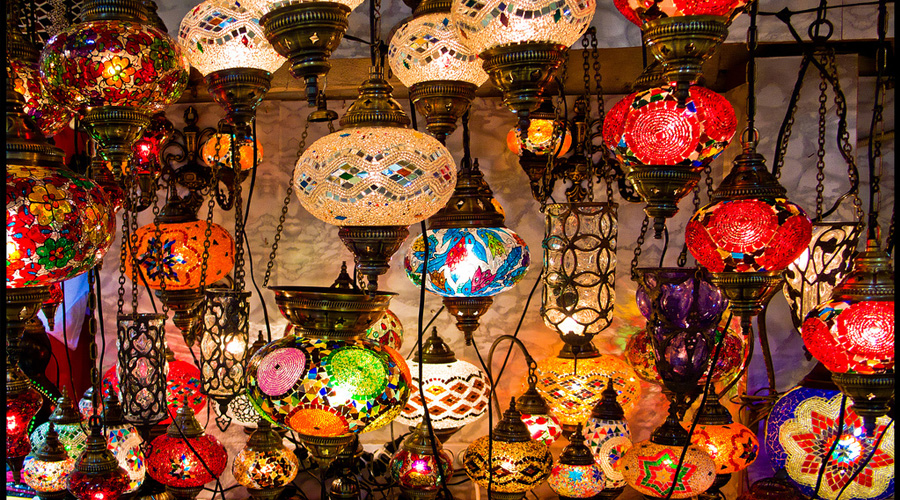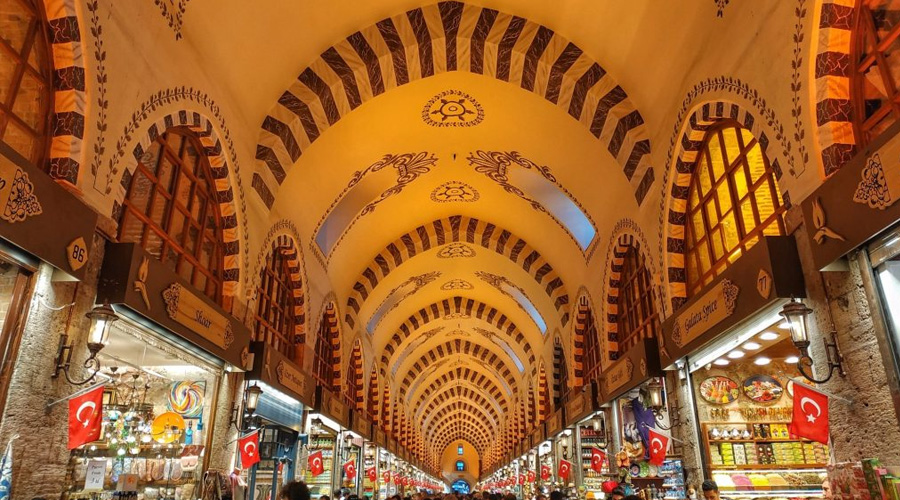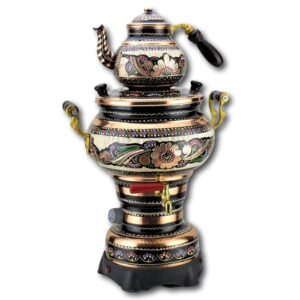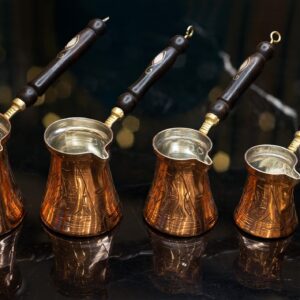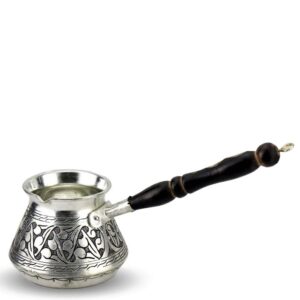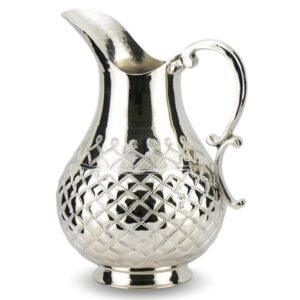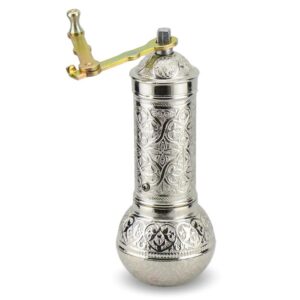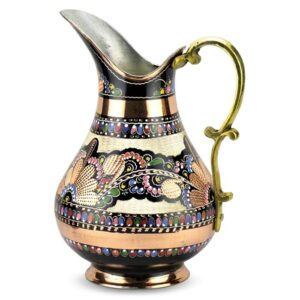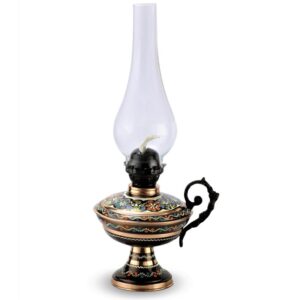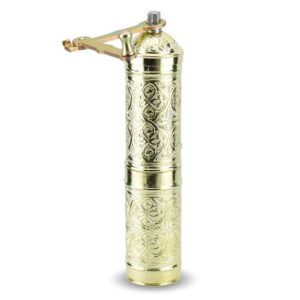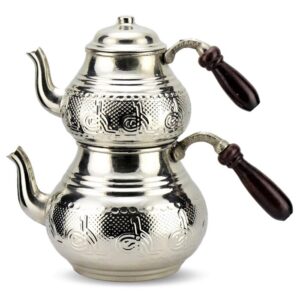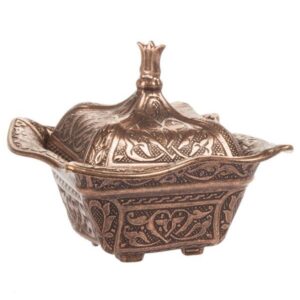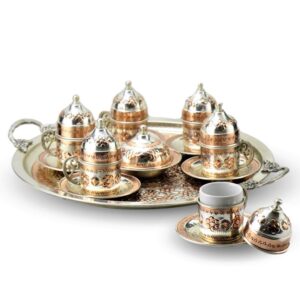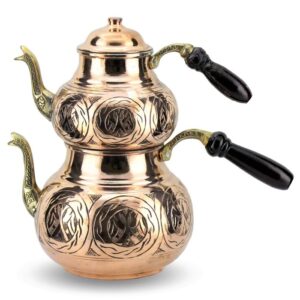The Grand Bazaar (Turkish: Kapalıçarşı, signifying ‘Covered Market’; likewise Büyük Çarşı, signifying ‘Grand Market’) in Istanbul is one of the biggest and most seasoned canvassed markets on the planet, with 61 covered roads and more than 4,000 shops on a complete space of 30,700 m2, attracting in the middle of 250,000 and 400,000 guests every day. In 2014, it was recorded No.1 among the world’s most-visited vacation destinations with 91,250,000 yearly guests. The Grand Bazaar in Istanbul is regularly viewed as one of the primary shopping centers on the planet.
Turkish Grand Bazaar… It is where the historical texture comes together with magnificent tastes and the smell of Turkish coffee… The Grand Bazaar is one of the oldest and largest covered bazaars in the world… Where the people living in Anatolia during the Seljuk and Ottoman periods wandered step by step… One of the bazaars in Istanbul, Grand Bazaar offers the best quality Turkish products such as handcrafted products, the finest silky shawls and scarves decorated with traditional patterns, antiques, leather products. It also has many stores in it where special carpets and rugs are sold. It is possible to find traditional Turkish clothing, also. And of course, Turkish delight, which has been sweetening our mouths for centuries can be found in this bazaar. If you want to drink coffee with Turkish delight, you may buy the greatest coffee in Istanbul from Kuru Kahveci Mehmet Efendi, a 150-year-old coffee seller.
Historical Background of Istanbul Grand Bazaar
There are 2 theses about the historical background of the Grand Bazaar in Istanbul. Some claim that it was built from scratch by Fatih Sultan Mehmet in 1461. On the other hand, some claim that it was built in the Byzantine period. Even if the first or second idea is right, the official establishment of the Grand Bazaar is considered to be in 1461. During the reign of Suleiman the Magnificent, the Grand Bazaar was expanded with the additions of new shops, mosques, madrasas, inns, and fountains, and became one of the most magnificent centers of the Ottoman Empire. In the following years, with the additions made by different sultans, the bazaar expanded as it had around 4,000 shops and 61 streets. As a result, it has evolved into a 31,000 m2 complex.
Once, the Grand Bazaar was made of wood but it has a risk for the people living in this period: the threat of fire. The first fire broke out in 1546. It had such a huge impact on the people that the fire was seen as a threat. However, it survived many fires over the years. People started to think that even with the threat of fire, The Grand Bazaar was reborn from its ashes again and again. It has been affected by devastating earthquakes, also. After the earthquake in 1766, II. During the Mustafa period, the bazaar was repaired and the Beyazıt and Nuruosmaniye gates, which bear the characteristics of the Tulip Era, were added. In 1894, it became unusable after a big earthquake again. In this period, the Grand Bazaar could not be used. As a result, trade stopped. After all of the devastating disasters, the bazaar, which was rebuilt with the financial assistance of Abdulhamid, took its present form. Because of the great efforts by Abdulhamid, you can see Abdülhamid’s signature at the gate of the Turkish Grand Bazaar at the main entrance of Beyazıt Square. And today, it is a cultural value that is visited by many people from Turkey and abroad.
Interior Design of the Grand Bazaar
The Grand Bazaar, which attracts attention in every period, has shops in many different areas such as valuable jewelry, weapons, antiques, and food and beverage. The names in the bazaar are sufficient to express what the place was used for before. The bazaar has 11 gates and entrances. We may list them as follows;
- Beyazıt (entrance near Beyazit mosque),
- Çarşıkapı,
- Çuhacıhan (broadcloth seller’s gate),
- Kuyumcular (where gold and silver shops are sold),
- Mahmutpaşa,
- Nuruosmaniye (near the Nuruosmaniye mosque),
- Örücüler (knitters),
- Sepetçihan (basket maker),
- Takkeciler (skullcap makers),
- Tavuk Pazarı (chicken market)
- Zenneciler (the seller of shoes and clothing for women).
And there are lots of streets in the Grand Bazaar. Some of them are Ağa, Altuncular, Acıçeşme, Aynacılar, Basmacılar, Çuhacıhanı Streets etc.
While constructed, hans were designed in the Grand Bazaar, also. Some of the famous hans are Ağa, Astarcı, Bodrum, Cebeci, Çuhacı, İçcebeci, Kapılar, Kaşıkçı, Kebapçı, Kızlarağası, etc.
What Is In the Grand Bazaar?
In the Grand Bazaar, there are lots of things that a person needs and even it is also possible to come across various establishments in the bazaar where the product is offered for sale in 97 category areas. Health centers, police stations, branches of all banks, and post offices are among these institutions. Although the Turkish Grand Bazaar seems like a crowded and chaotic place, it is actually in a structure where complete order works. Because it was designed well and everyone has their own places to work.
If you visit the Grand Bazaar, you will be able to see the colorful images of the foreign exchange dealers, the workshop of jewelry, small shops of artisans dealing with small handicrafts, people who make artistic decorations, a magnificent view of calligraphy artists, and antique shops. coppersmiths, the artisans, with their warm and pleasant conversations as well as their artistic works. If you want to buy something, there are lots of options that you must consider: yazzma (cotton and silk pashminas), ethnic Turkish rugs and carpets, local clothing, ceramic items, silver jewelry, handmade gifts, gold bracelets and necklaces, amulets, and leather goods. Also, if you want to buy and get the items cheaper, you can bargain without shame. Because bargaining is a tradition of the Grand Bazaar!
The Importance of the Grand Bazaar for Tourism
The Istanbul Grand Bazaar has a very important role both today and in the past. Because this bazaar has become a trade center for centuries and has been a place where life is alive. In addition, being one of the largest and oldest covered bazaars in the world, it is lively and crowded at all hours of the day. Shopkeepers persistently invite visitors to their store. The stores at the entrance of the Grand Bazaar offer almost all handmade and exported goods in Turkey for sale. Handmade carpets and jewelry are the best examples of traditional Turkish art. These are sold with certificates of quality and origin and guaranteed shipping all over the world. In addition to carpets and jewelry, famous Turkish works made of silver, copper, bronze souvenirs, decorative items, ceramics, onyx, and leather are offered to visitors of the Grand Bazaar. It is one of the most important historical buildings adorning Istanbul, and Western writers mostly mentioned the Grand Bazaar in their travel books and memoirs. For example, Evliya Çelebi, one of the writers who have a book of travels (Seyahatname in Turkish), expresses his feelings with these words:
“In İstanbul’s most select and crowded location, it is a market that constitutes the grand treasury of the House of Osman, virtually a fortress of guffaws.”
This sentence actually shows how the Grand Bazaar is so important for this period.
Fields of Activity in the Grand Bazaar
In the Grand Bazaar, it is also possible to witness the professions and their products, which were very common in the past but are about to disappear today. We may list these occupations as follows;
- Herbalist (seller of medicinal herbs)
- Antique dealer
- Shoe shiner (lostra in Turkish)
- Coppersmith
- Keeper of a coffee house (çay ocağı in Turkish)
- Bag maker
- Leather seller
- Money changer
- Barber
- Tile-maker
- Cloth trader
- Jeweler
- Artisan
Interesting Facts About the Grand Turkish Bazaar
- In the Grand Bazaar, each street was reserved for a professional group. Therefore, the street names were Aynacılar, Hasırcılar, Kilitçiler, İpekçiler, Kürkçüler, Yorgancılar, Terlikçiler, Fesçiler. Today, the names continue, but some professional groups have disappeared. Occupational guilds, which supervised competition, commercial ethics, and master-apprentice relations, could work efficiently, thanks to the concentration of the same products in one place. Products could only be sold at the price specified by the government, and advertising was prohibited.
- Most professions and shops were handed down from father to son. So families had their trust built up over generations so much that the people would give their money to the shopkeepers to keep it as a bank. The Grand Bazaar was a place of high security.
- At that time, the shops were not in the form of rooms as they are today. Shelves served as showcases, and the seller (esnaf in Turkish) sat on the bench. That’s why shops were called closets. At the end of the day, the curtains were drawn and the closets were closed.
- Precious products such as jewelry and weapons were sold in İçbedesten. In Sandal Bedesten, the silk trade was being made (Sandal is the name given to the fabric that is already made of silk and cotton.)
- During the Ottoman period, according to the law, Muslims were required to wear yellow shoes. Orthodox Greeks were required to wear blue, Jews were required to wear black, and Armenians were required to wear red shoes. These purchases were made at the Pabuçcular Market, where there were thousands of shoes.
- Due to security measures, the Grand Bazaar was closed at night. Only the sultan could open it. It was only opened in its history to celebrate the return of Sultan Abdulaziz from Egypt in 1867. The Sultan passed through the streets on horseback and greeted the people.
- There were no restaurants in the Grand Bazaar in the Middle Ages. Everyone brought their own food. The foods that could be found were doner, kebab, and chicken breast, which were sold at kiosks on Halıcılar and Acıçeşme It is said that Sultan Mahmud II secretly mingled with the public and came here to eat dessert.
- The Grand Bazaar was one of the rare places where Ottoman women could participate in social life. As of the Tanzimat period, women in the Sultan‘s family and in the harem were also able to come to the Grand Bazaar.
How to Get to the Grand Bazaar?
Do you want to visit the Grand Bazaar and see what is in it? Then, you should be relaxed. Because the bazaar has more than 20 gates, there are many alternatives to reach the bazaar. However, the easiest and most well-known direction is Beyazıt Gate. The wisest way to reach the Grand Bazaar would be to use the Kabataş-Bağcılar Tram Line and get off at Beyazıt-Kapalı Çarşı station. After getting off at the station, it is possible to reach the bazaar gate in a minute or two.
If you are not able to visit the Grand Bazaar, then you have an option, also. If you want to buy or get something from the bazaar, you may shop online. The bazaar has an online website and online shopping site from which you may buy daily fresh Turkish products, traditional Turkish goods, goods with handicrafts, traditional Turkish rugs and carpets, etc.
Working Days of the Grand Bazaar
Hosting many local and foreign tourists every year, the Grand Bazaar manages to maintain its importance with both its historical texture and artistic elements that shed light on the traces of the past. Apart from being a producer, it also manages to leave an impressive impression on the visitors with its friendly tradesmen and valuable handicraft activities. The Istanbul Grand Bazaar is open to visitors and shopping every day between 08.30 and 19.00 during the week and it is only closed on Sundays.
Are You Ready To Explore the Grand Bazaar?
How about meeting history in the fragrant atmosphere of the Grand Bazaar? It is very easy to get lost in its streets, to taste delicious Turkish delights, and to reach magnificent handcrafted products! You wouldn’t know Istanbul without seeing this building that we inherited from the past. Because this structure is one of the most important structures connecting the past to the present. How does it feel to walk through the same paths as people who lived in the past and passed those roads?
Here, we invite you to experience this feeling. And we also add the smell of Turkish coffee to this feeling! Are you ready for an adventure in the cradle of cultures, in the center of trades and Istanbul, in the light of meticulously crafted calabash lamps? Let’s embark on this adventure together!
